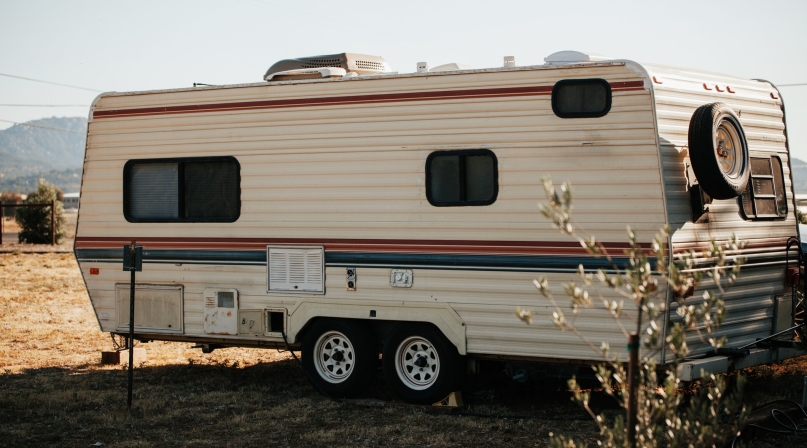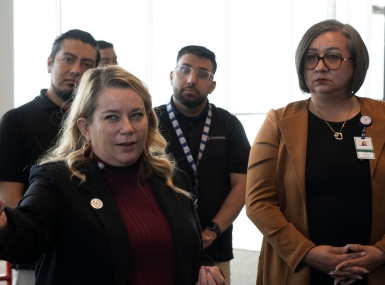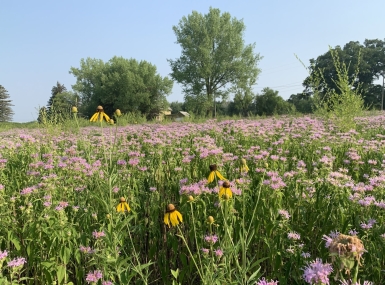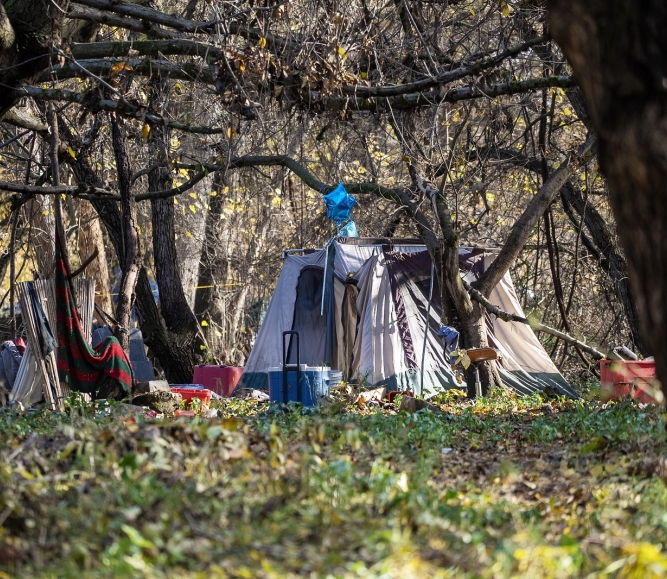Safe parking lots offer midway point to fight homelessness

Key Takeaways
A person or family, down on their luck, can drive on to a safe parking lot in Deschutes County, Ore. for a place to stay. But even when wheels stop for a while, a program that’s made parking lot camping legal also prompts the guests to plan for a future where they don’t need it.
The county is building off of two of its cities’ policies allowing for parking lots where people can camp in their cars. The key to those safe parking programs, Commissioner Phil Chang said, is the insistence that people taking advantage of them work toward not having to do so in the future.
“They have been incredibly successful at moving people through homelessness out into permanent housing on the other end,” Chang said about safe parking lots in the cities of Bend and Redmond. “I would attribute a lot of that to not just providing a place for people where they’re allowed to be, but also providing significant case management support.”
The cities’ policies allowed the establishment of safe parking sites owned by faith communities, businesses, non-profit organizations, government offices or private landowners. The Deschutes County policy expands the zone where safe parking lots are legal to a mile beyond the cities’ boundaries.
In addition to the parking lots themselves, the programs offer bathrooms, sanitation resources, cell phone-charging stations and more.
“The safe parking here is very, very deliberately intended,” Chang said. “It’s set up to screen people and select people who are good candidates for success and then actively support them and move them through homelessness to a better place. It is intended to be transitional.”
Mountain View Community Development maintains seven safe parking lots in Redmond, which total 29 parking spots that serve 40-60 individuals per night, according to Executive Director Rick Russell. Russell also serves as lead pastor of the Mountain View Fellowship, which played host to winter shelters and emergency type shelters for several years before driving the development of Redmond’s ordinance and offering its parking lot as a first safe parking site, before recruiting a Veterans of Foreign Wars post’s lot and growing from there.
Sacramento, San Diego and Los Angeles counties in California maintain safe parking programs, with Sacramento’s program including $23 million to purchase a 13-acres site, including a warehouse that will contain 140 cabins, along with 50 outdoor spots, CapRadio reported. San Luis Obispo County, Calif. however, closed its safe parking lot and offered relocation vouchers after reports of violence among some residents and the formation of a union, the San Luis Obispo Tribune reported.
Deschutes County and its cities have been motivated to keep its sites small to avoid similar problems.
“If you put more than a certain number of people in a place, especially if you don’t have 24/7 management and a really strong case manager presence, then things can devolve into chaos,” Chang said.
Russell said fears of misbehavior in the lots are put to rest by the communities that develop there, however short-lived.
“We find that the participants have a kind of a healthy sense of ownership of the locations, so if something is not going according to plan, we hear about it from them very quickly,” he said. “We come out to each lot at least once every other night.”
Mountain View’s lots have security cameras, but Russell has found that self-policing aspect has been good for the lots themselves.
“I tell churches, businesses, anybody who is interested in hosting this, that hosting safe parking will make your parking lot safer than it was before,” he said. “We used to find beer bottles or marijuana paraphernalia or clothing items in the mornings when our lots were empty — I like to joke that you know people do unholy things in church parking lots late at night — but now, if someone who doesn’t belong there shows up, we’ll get a text message from someone letting us know.”
Intake procedures include an in-person interview and the development of a plan to eventually get out of the lot.
“The number one rule for participating in the program is ‘Will you agree to weekly case management meetings that are housing focused?’” Russell said. “The participant needs to want to move on to more stable housing.”
The cities’ policies have been in place since 2021 and the county passed its policy in late 2023, though the county allocated $200,000 in American Rescue Plan Act funding so Mountain View could hire a case worker well ahead of passing its policy. The cities allocated $50,000 in ARPA funding. Russell said the county’s support early on helped the program establish itself among skeptical residents. Chang said the county also offered statistics to back the proposal.
“There’s some NIMBYism and a resistance to offering shelter in our community, based on a belief that ‘If you build it, more people will come to take advantage of the services,’” Chang said. “When we do our point in time count (of homeless Deschutes County residents) we find that 80% of the people who are homeless here became homeless here, so people aren’t coming here from Chicago or from Dallas or wherever people think they’re coming from.”
While much of Deschutes County is unincorporated and potentially offers a lot of territory to expand safe parking, Chang said keeping eligible locations close to the cities was crucial.
“We want to have safe parking sites in reasonably close proximity to services and jobs and long-term housing opportunities,” he said.
Most guests stay in recreational vehicles (RVs) or trailers but some have tried sedans or vans for shorter periods. Many guests are leaving home in a hurry or have recently lost their housing.
“We’ve seen everything from a Jeep, to a family of four in a two-door Honda to some very old RVs,” Russell said. “I think one of our greatest challenges is that people often choose the RV. They lost their housing, but they were able to afford this cheap RV, or their uncle gave it to him or something like that and they have a mindset of like ‘Well, if I could get to an RV park, yeah then I could just do this forever, or if I could fix up this RV or if I could get a little nicer RV.’ They often aren’t equipped for very cold weather like we have out here, they’re very expensive to repair and often, RV parks only work for newer models. We really try to, as much as possible, encourage people to housing options outside of their RV.”
Mountain View is working toward sustainable funding for its operations and caseworker. The county has donated 10 acres that Mountain View will develop into a 60-space RV park for longer-term guests, which would charge roughly half the rate of for-profit parks. The utilities available on that land, which the county had planned to auction, will be enough that Mountain View would be able to build permanent subsidized housing that could accept vouchers.
“We try not to think about housing as binary — not that you’re homeless or housed — it’s more like a ladder and you’re helping people to move up the next rung on the ladder.”
Related News

U.S. Department of Energy announces $18 million for Local Government Energy Program
U.S. Department of Energy announces $18 million for Local Government Energy Program

El Paso County, Texas helps migrants on their way
Though they don't often stay more than a day, asylum seekers receive care and services from El Paso County, Texas before they leave for their next destination.

Sherburne County and tribal nations collaborate on county park
Sherburne County, Minn. engaged tribal nations to revise its plans for a park that included a Native American burial ground.
County News
County parks departments double as outreach to homeless campers

